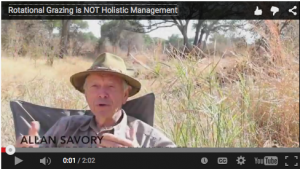 “If you give a man a fish you feed him for one day. If you teach him how to fish you teach him for a lifetime.” has been an amazing insight for many people particularly in the aid field. The problem is that we live in a changing and changeable world. What worked yesterday may not work tomorrow. What if the migration patterns change? or the feeding habits, or even the climate? Or what if the way I know how to fish is depleting the fish stocks?
“If you give a man a fish you feed him for one day. If you teach him how to fish you teach him for a lifetime.” has been an amazing insight for many people particularly in the aid field. The problem is that we live in a changing and changeable world. What worked yesterday may not work tomorrow. What if the migration patterns change? or the feeding habits, or even the climate? Or what if the way I know how to fish is depleting the fish stocks?
This is the reason why permaculture is called permaculture design. It is not meant to teach folks how to fish, but to help them to learn how to provide for their needs where they are with what they have. It is meant to teach us how to think about fishing. It is our minds that miss the meta-pattern or meta-information of an approach or way of thinking and narrow it to some of the techniques.
This is as true for Holistic Resource Management as it is for permaculture as can be seen in this short video called Rotational Grazing is NOT Holistic Management. Design is never about the pieces, but always about the relationships between them. It is a thought process, a way of seeing.
In the same way French forester Jean Pain originated a system that heated his home and ran his equipment, fed his family and earned a living from the byproducts of thinning the forest landscape. His aim was to regenerate the landscape by managing fire through thinning and pruning. Yet he is known for the tools he used in that system.
Similarly Fukuoka developed non-doing farming approaches by asking different questions: What can I NOT do? He too is known for his tools of mulching and planting seedballs.
Like the many clever tools of permaculture these are effective and interesting. But they are the flowers in the meadow, colorful and brightly colored. Their source and the rich matrix of our hope, is the the dark root-filled soil from which they spring: our Pattern Mind.
Share this post!






By submitting a comment you grant Pattern Mind by Joel Glanzberg a perpetual license to reproduce your words and name/web site in attribution. Inappropriate and irrelevant comments will be removed at an admin’s discretion. Your email is used for verification purposes only, it will never be shared.